京都や東京の花街で、磨き抜かれた芸と粋な立ち居振る舞いで人々を魅了する芸妓(げいこ)。舞妓の可憐さとは一線を画す、その洗練された美しさと知性は、まさに日本の伝統文化が誇る「匠」の姿です。しかし、彼女たちがどのようにして生まれ、時代の変遷の中でその専門性を高めてきたのか、その誇り高き歴史はあまり知られていません。
- 「芸者」の始まりは男性だったという意外な事実
- 遊女とは一線を画す「芸」を売る専門職の確立
- 伝統芸能の継承者としてのプライドと現代的役割
宴席を彩った男たちの芸
私たちが「芸者」と聞いて思い浮かべるのは、三味線を弾き、美しい舞を披露する女性の姿でしょう。しかし、その歴史を遡ると、驚くべき事実に突き当たります。日本で最初の「芸者」は、実は男性だったのです。
江戸時代、宴席を盛り上げる専門職として「幇間(ほうかん)」または「太鼓持(たいこもち)」と呼ばれる男性たちが活躍していました。彼らは、巧みな話術、物真似、鳴り物などの多彩な芸で客を楽しませ、宴の進行をスムーズにする、いわばプロのエンターテイナーです。この「芸を専門にする者」という意味での「芸者」の役割は、彼らが元祖でした。彼らの存在なくして、後の女性芸妓が持つ「座持ち(座を取り持つ)」という重要な役割は生まれなかったかもしれません。
時代の要請、女性芸者の誕生
女性の芸者が歴史の表舞台に登場するのは、18世紀半ばのことです。その発祥の地は、京都の祇園ではなく、江戸の深川であったと言われています。当時、深川の非公認の遊里(岡場所)で、三味線を弾き、唄や舞を披露する「踊り子」と呼ばれる女性たちが現れ、たちまち人気を博しました。
彼女たちは、公許の遊郭であった吉原の遊女とは明確に一線を画していました。あくまでも売るのは「芸」であり、その粋な心意気は多くの文化人や通人たちの支持を集めます。この「芸は売っても色は売らぬ」という気概こそ、芸妓という職業の根幹をなすプライドの源流です。1779年には、幕府が「芸者取締所(後の検番)」を設置。これにより、芸者は正式な職業として公認され、遊女とは異なる専門職としての地位が法的に確立されたのです。
明治の変革と芸妓のプライド
明治時代に入ると、芸妓は近代国家の社交界において重要な役割を担うようになります。政府高官や財界の要人たちが集う料亭や茶屋は、重要な会合や情報交換の場となりました。そうした席で、高度な芸と洗練された会話術、そして固い口で客をもてなす芸妓は、単なるエンターテイナーではなく、高い教養と格式を備えたパートナーとして重宝されたのです。
この時代に、舞妓が芸妓になる前の修行期間であるという、京都を中心とした制度もより明確に確立されました。舞妓として約5年間の厳しい修行を積み、舞や唄、作法など全ての試験に合格した者だけが、一人前の芸妓として認められる「襟替(えりかえ)」という儀式を経てデビューすることができます。この「一本立ち」した芸妓は、プロフェッショナルとしての誇りを胸に、自らの芸を磨き続ける存在となっていきました。
現代に生きる「粋」の継承者
現代において、芸妓は日本の伝統芸能を体現し、その高度な技術を継承する稀有な存在です。花街の規模縮小や後継者問題といった厳しい現実に直面しながらも、彼女たちは日々稽古に励み、お座敷を通じて日本の「おもてなし」文化の真髄を伝えています。
その役割は国内に留まりません。海外での文化交流イベントに参加したり、国際的な賓客をもてなしたりと、日本の文化の顔として国際的な舞台で活躍する機会も増えています。舞妓が持つ「華やかさ」や「初々しさ」とは異なる、経験に裏打ちされた「深み」と「落ち着き」、そして磨き抜かれた「芸の力」。それこそが、時代を超えて人々を魅了し続ける芸妓の真価であり、現代に生きる「粋」の継承者たる所以なのです。
解説ポイント①:「芸者」の始まりは男性だったという意外な事実
芸妓のルーツである「幇間(ほうかん)」は、客と遊女の間を取り持ったり、宴席の雰囲気を盛り上げたりする男性でした。彼らは、単に騒ぐだけではなく、古典芸能や最新の流行、世情に通じたインテリであり、高いコミュニケーション能力が求められました。この「客の心を楽しませ、場の空気を読む」という専門技能が、後の女性芸妓の基本的なスキルセットの土台となりました。つまり、芸妓の仕事の本質は、舞や唄といった「芸」の披露だけでなく、その場にいる全ての人々が心地よく過ごせる空間を創り出す、高度なプロデュース能力にあるのです。
解説ポイント②:遊女とは一線を画す「芸」を売る専門職の確立
女性芸妓が誕生した当初、幕府は彼女たちを「風俗を乱すもの」として度々取り締まりました。しかし、芸妓たちの人気と、彼女たちを支持する客層の力はそれを上回ります。結果として、幕府は彼女たちを「芸者」という職業として管理する道を選びました。検番の設置は、芸妓たちの活動を監督する目的でしたが、同時に芸妓の料金(玉代)や稼働時間を公定化し、遊女とは明確に異なる職業としての身分を保障する役割も果たしました。この制度化が、芸妓が自らの「芸」に誇りを持ち、専門性を高めていく上で大きな推進力となったのです。
解説ポイント③:伝統芸能の継承者としてのプライドと現代的役割
芸妓は、一人前のプロフェッショナルであることの証として、舞妓時代とは大きく装いを変えます。例えば、髪型は地毛で結う舞妓とは異なり、品格のある「島田」などの鬘(かつら)を着用します。着物も、肩や袖に柄が入った振袖の舞妓に対し、芸妓は落ち着いた色合いの無地や江戸小紋などの留袖を粋に着こなします。これは、自らの内面から滲み出る芸と経験で客をもてなすという、プロとしての自信の表れです。現代の芸妓は、こうした厳しい様式美と伝統を守りながら、日本文化の奥深さを国内外に伝えるアンバサダーとして、その存在意義を一層高めています。
参考文献
- 文化庁 – 文化遺産オンライン:芸者
- 朝日新聞デジタル – (SKE48のfor you)芸妓さんの姿、目に焼き付けて アイドルから次の道へ 古畑奈和
- 向島墨堤組合 – 芸者のご紹介
- 日本の歴史・文化を感じるメディア – 「芸者」とはどんな人?知っているようで知らない芸者の世界。
【English Article】
[Geigi] The Path of the Artisan: Tracing the History of Geisha from Edo’s “Iki” to Modern Mastery
In the “hanamachi” (geisha districts) of Kyoto and Tokyo, “geigi” captivate people with their polished artistry and sophisticated demeanor. Distinct from the girlish charm of a maiko, their refined beauty and intelligence embody the very essence of a “takumi,” or master artisan, that Japanese traditional culture proudly presents. However, the proud history of how they came to be, and how they have elevated their specialty through the ages, remains largely unknown.
- The Surprising Fact That the First “Geisha” Were Men
- The Establishment of a Profession Selling “Art,” Distinct from Courtesans
- Pride as Heirs of Traditional Arts and Their Modern Role
The Artistry of Men Who Graced Banquets
When we hear the word “geisha,” we likely picture a woman playing the shamisen and performing beautiful dances. However, tracing its history leads to a surprising fact: the first “geisha” in Japan were actually men.
During the Edo period (1603-1868), men known as “hōkan” or “taikomochi” were active as professional entertainers who enlivened banquets. They were, in essence, professional masters of ceremony who entertained guests with a wide array of skills, including witty conversation, impersonations, and playing musical instruments, ensuring that parties proceeded smoothly. In the sense of being “a person who specializes in the arts,” they were the original geisha. Without them, the crucial role of “jo-mochi” (mastering the atmosphere of a gathering), which later female geigi would hold, might never have developed.
The Demand of the Times: The Birth of Female Geisha
Female geisha made their appearance on the historical stage in the mid-18th century. Their birthplace is said to be not Gion in Kyoto, but Fukagawa in Edo (present-day Tokyo). At that time, in the unofficial pleasure quarters of Fukagawa, women called “odoriko” (dancing girls), who played the shamisen and performed songs and dances, emerged and quickly gained immense popularity.
They drew a clear line between themselves and the “yūjo” (courtesans) of the officially licensed Yoshiwara district. They insisted on selling only their “gei” (art), and their chic spirit won the support of many cultural figures and connoisseurs. This pride in “selling art, not favors” is the very source of the pride that forms the bedrock of the geigi profession. In 1779, the shogunate government established a “Geisha Torishimari-sho” (Geisha Control Office, later known as the “kenban”). This officially recognized geisha as a legitimate profession and legally established their status as specialists, distinct from courtesans.
Meiji Reforms and the Pride of the Geigi
Entering the Meiji period (1868-1912), geigi came to play an important role in the social circles of the modernizing nation. Restaurants and teahouses where high-ranking government officials and financial magnates gathered became important venues for meetings and information exchange. At such gatherings, geigi, who entertained guests with their advanced artistic skills, sophisticated conversation, and discretion, were valued not merely as entertainers but as highly cultured and respected partners.
During this era, the system, primarily in Kyoto, where a maiko serves an apprenticeship before becoming a geigi, was more clearly established. Only those who completed about five years of rigorous training as a maiko and passed all examinations in dance, song, and etiquette could debut as a full-fledged geigi through a ceremony called “erikae” (the turning of the collar). A geigi who has thus achieved “ippon-dachi” (full-fledged status) becomes a professional who continues to polish her art with pride.
Heirs of “Iki” Living in the Modern Age
Today, geigi are rare individuals who embody Japan’s traditional performing arts and inherit their advanced techniques. While facing harsh realities such as the downsizing of hanamachi and succession issues, they devote themselves to daily practice and convey the essence of Japan’s “omotenashi” (hospitality) culture through their work at private gatherings.
Their role is not confined to Japan. Their opportunities to be active on the international stage are increasing, participating in cultural exchange events abroad and entertaining international dignitaries as the face of Japanese culture. What distinguishes them from the “glamour” and “youthful charm” of a maiko is the “depth” and “composure” backed by experience, and the “power of polished art.” This is the true value of the geigi that continues to fascinate people across generations, and it is why they are the living heirs of “iki” (sophisticated style).
Analysis Point ①: The Surprising Fact That the First “Geisha” Were Men
The “hōkan,” the forerunners of geigi, were men who mediated between clients and courtesans or enlivened banquet atmospheres. They were not just merrymakers; they were intellectuals well-versed in classical arts, current trends, and worldly affairs, requiring high-level communication skills. This specialized ability to “entertain the hearts of guests and read the mood of the room” became the foundation for the basic skill set of later female geigi. In other words, the essence of a geigi’s work lies not only in performing “arts” like dance and song but also in the advanced production skill of creating a space where everyone present can feel comfortable.
Analysis Point ②: The Establishment of a Profession Selling “Art,” Distinct from Courtesans
When female geisha first emerged, the shogunate often cracked down on them for “disrupting public morals.” However, their popularity and the power of their clientele surpassed this. Consequently, the government chose to manage them under the official profession of “geisha.” The establishment of the kenban was intended to supervise their activities, but it also served to formalize their fees (“gyokudai”) and working hours, thereby guaranteeing their status as a profession distinct from courtesans. This institutionalization became a major driving force for geigi to take pride in their “art” and enhance their professionalism.
Analysis Point ③: Pride as Heirs of Traditional Arts and Their Modern Role
As a sign of being a full-fledged professional, a geigi’s appearance changes significantly from her maiko days. For example, unlike a maiko who styles her own hair, a geigi wears an elegant wig in a style such as the “shimada.” While maiko wear colorful, long-sleeved “furisode” kimonos with patterns on the shoulders and sleeves, geigi stylishly wear more subdued “tomesode” kimonos in solid colors or with fine patterns like “Edo-komon.” This is an expression of their confidence as professionals who entertain guests with the art and experience that emanates from within. Modern geigi, while preserving this strict aesthetic and tradition, are further enhancing their significance as ambassadors who convey the depth of Japanese culture both at home and abroad.
References
- Agency for Cultural Affairs – Cultural Heritage Online: Geisha
- Asahi Shimbun Digital – (For you from SKE48) Etching the figure of a geigi in my mind: From idol to the next path, Nao Furuhata
- Mukojima Bokutei Association – Introduction of Geisha
- Media for feeling Japanese history and culture – What kind of person is a “Geisha”? The world of geisha you think you know, but don’t.

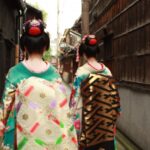
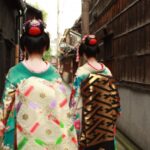
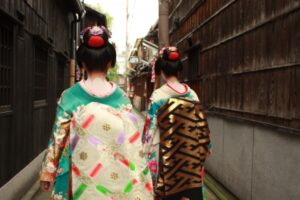

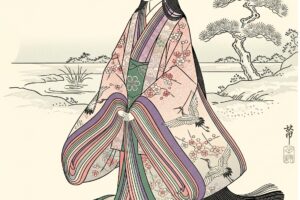

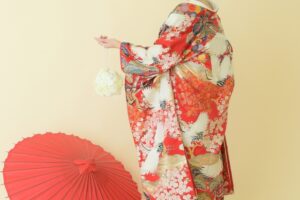

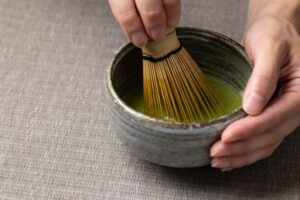

コメントを残す